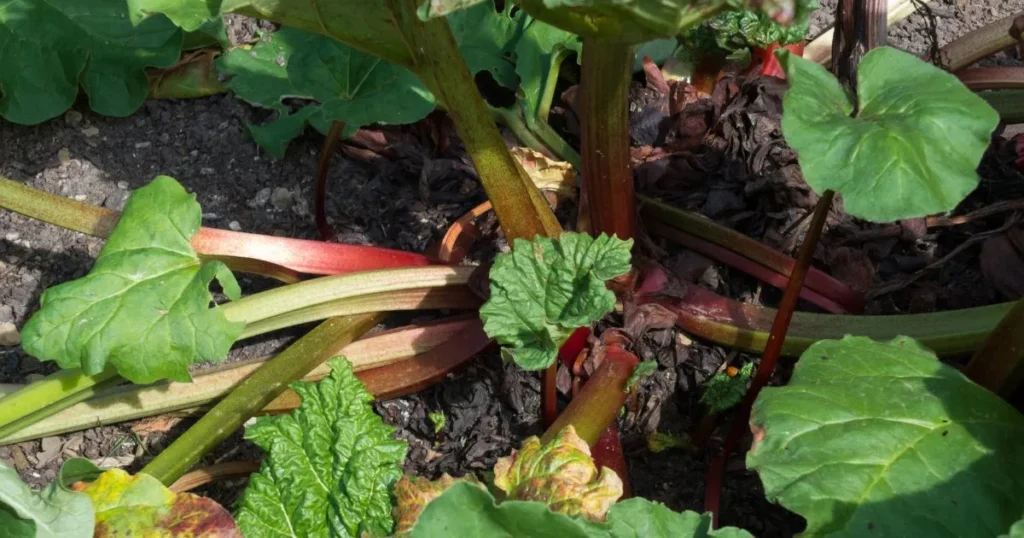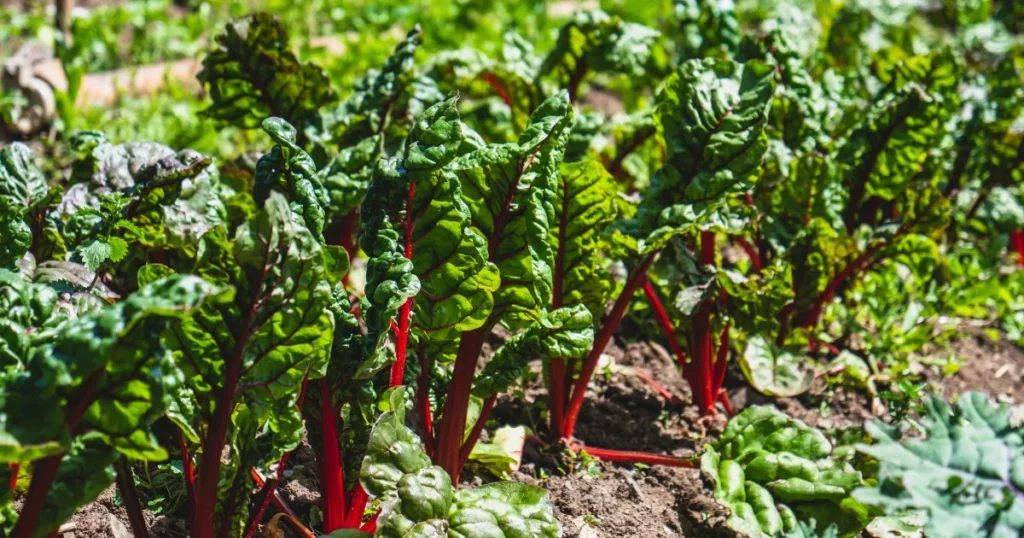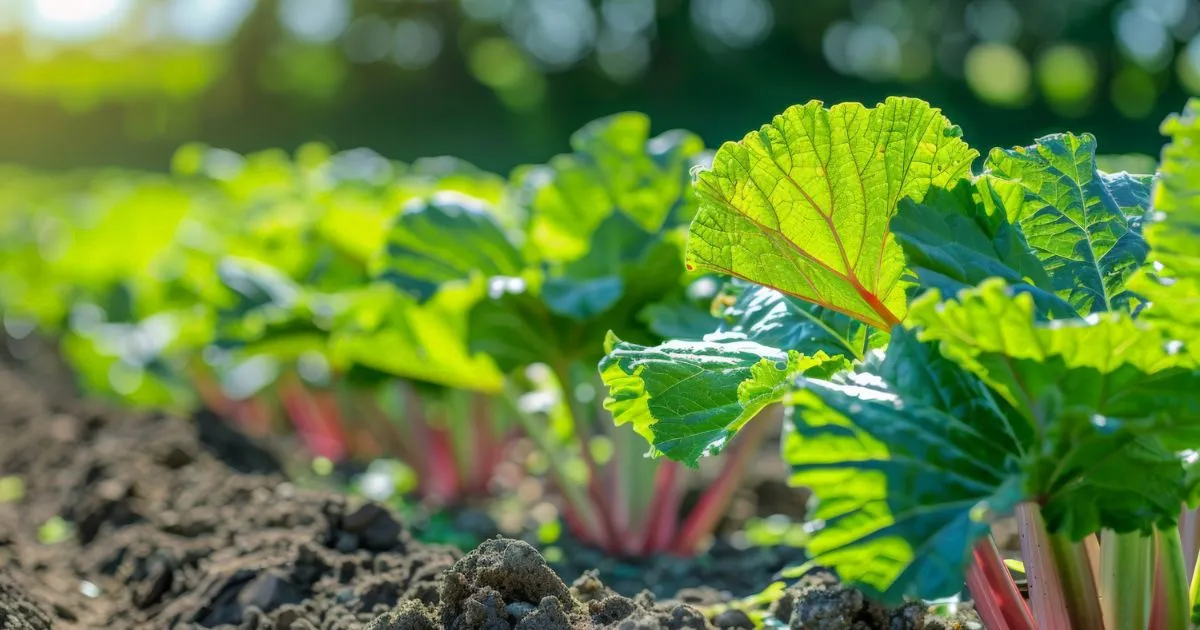Table of Contents
Growing rhubarb in pots is an excellent choice for gardeners with limited space or those living in apartments. The versatility of growing rhubarb in containers allows you to enjoy this delicious and tart vegetable even if you don’t have a traditional garden. With the right knowledge and care, you can successfully grow healthy rhubarb in pots and enjoy its unique flavor in your dishes. In this article, we will cover everything you need to know about growing rhubarb in pots, from choosing the right pot to caring for your plants and harvesting your rhubarb.
Why Grow Rhubarb in Pots?
Rhubarb is a hardy perennial plant that typically grows in the ground, but growing rhubarb in pots offers many benefits. First, it allows you to control the growing conditions, providing a more consistent environment. Containers also allow you to move your plants to an ideal location, protecting them from extreme weather and pests. Furthermore, growing rhubarb in pots is an excellent option for those with limited garden space or those living in areas with poor soil.
Benefits of Growing Rhubarb in Pots
When it comes to growing rhubarb in pots, there are numerous advantages to consider:
- Portability: Rhubarb plants in pots can be easily relocated to areas with better sunlight or protection from frost.
- Soil Control: Growing rhubarb in containers allows you to control the quality of the soil, which is important for this plant to thrive.
- Space-Saving: Container gardening is ideal for small spaces, such as balconies, patios, or rooftops.
- Pest Control: By growing rhubarb in pots, you reduce the risk of pests that might otherwise invade your garden soil.
Best Containers for Growing Rhubarb in Pots
Selecting the right container is crucial when growing rhubarb in pots. The pot you choose should be large enough to accommodate the rhubarb plant as it grows, with ample space for its root system to develop. Here are some key factors to consider when choosing the ideal pot for rhubarb:
Size of the Pot
Rhubarb requires a large pot with a capacity of at least 15 gallons. A container that is too small can restrict root growth, leading to stunted plants. Ideally, choose a pot that is at least 18 inches in diameter and 24 inches deep to ensure the plant has enough room to spread out. Larger pots are even better, as they allow the plant to thrive and produce more rhubarb stalks.
Material of the Pot
The material of the pot also plays a role in growing rhubarb in pots. Clay, ceramic, or heavy-duty plastic pots work well for rhubarb. These materials help retain moisture while also providing good insulation for the roots. Ensure the pot has drainage holes at the bottom to prevent waterlogging, which can lead to root rot.

Drainage and Watering Considerations
Proper drainage is essential for growing rhubarb in pots. Rhubarb plants do not like to sit in water, so a pot with ample drainage holes is a must. Additionally, be prepared to water the plant regularly, especially during dry spells. Rhubarb needs consistently moist soil to thrive, but it should never be soggy. Water the plant deeply to ensure the moisture reaches the root zone.
Choosing the Right Soil for Growing Rhubarb in Pots
Rhubarb plants prefer slightly acidic soil, with a pH level of 5.5 to 6.5. When growing rhubarb in pots, it is essential to use well-draining soil that is rich in organic matter. You can either purchase a high-quality potting mix or create your own by mixing equal parts of garden soil, compost, and sand. Adding compost to the soil will improve its fertility and help retain moisture.
How to Plant Rhubarb in Pots
Now that you’ve chosen your container and soil, it’s time to plant your rhubarb. The process of planting rhubarb in pots is relatively simple but requires careful attention. Here’s a step-by-step guide to planting rhubarb in a pot:
Step 1: Prepare the Pot
Fill the pot with the prepared potting mix, leaving a few inches of space at the top to allow room for watering. Gently tap the pot to settle the soil and eliminate any air pockets.
Step 2: Planting the Rhubarb
If you’re starting with rhubarb crowns (the part of the plant that grows underground), place the crown in the center of the pot. The crown should be planted just below the soil surface, with the buds facing upward. If you’re using rhubarb seedlings, dig a small hole and place the seedling in, ensuring the root system is well-covered with soil.
Step 3: Watering
Water the plant immediately after planting to settle the soil around the roots. Keep the soil consistently moist during the growing season, but avoid overwatering.
Caring for Rhubarb Plants in Pots
Once you’ve planted your rhubarb, proper care is essential for healthy growth. Here are some tips for growing rhubarb in pots and ensuring your plant thrives:
Light Requirements
Rhubarb needs plenty of sunlight to grow well. Place your pot in a location where it will receive at least 6 hours of sunlight per day. A sunny patio or balcony is an ideal location for growing rhubarb in pots.
Fertilizing Rhubarb in Pots
Rhubarb plants benefit from regular feeding to encourage strong growth and large stalks. Use a balanced fertilizer that is high in potassium and phosphorus to support rhubarb development. Fertilize once every month during the growing season, following the manufacturer’s instructions for application.

Pruning and Maintenance
Rhubarb doesn’t require much pruning, but you should remove any dead or damaged leaves to prevent disease. In addition, when harvesting, remove any flowering stalks immediately, as flowers can divert energy away from the edible stalks.
Winter Care for Rhubarb in Pots
Rhubarb is a hardy plant, but it may need extra protection during the winter months, especially if you live in a region with freezing temperatures. If you are growing rhubarb in pots in colder climates, you can either bring the pot indoors or protect it by wrapping the pot in burlap or frost cloth. Alternatively, you can insulate the pot by burying it in the ground or placing it in a sheltered spot.
Harvesting Rhubarb from Pots
Rhubarb typically takes 2-3 years to reach maturity, so don’t expect to harvest the first year. During the first year, it’s best to let the plant grow without harvesting to establish strong roots.
When to Harvest
Once your rhubarb plant is established, you can begin harvesting in the spring. Harvest the stalks when they are 12-18 inches long and firm. Pull the stalks gently but firmly from the base, ensuring you don’t damage the crown of the plant. Leave some stalks behind to allow the plant to continue growing.
Troubleshooting Common Problems When Growing Rhubarb in Pots
While growing rhubarb in pots is relatively straightforward, there are a few common issues you may encounter. Here’s how to troubleshoot some of the most common problems:
Yellowing Leaves
Yellow leaves can be a sign of overwatering, poor drainage, or nutrient deficiencies. Ensure that the pot has proper drainage and that the soil is not too soggy. Additionally, fertilize the plant to replenish any nutrients that may have been depleted.
Stunted Growth
If your rhubarb plant isn’t growing as expected, it could be due to insufficient sunlight or overcrowding in the pot. Make sure your rhubarb is getting enough light and that the pot is large enough to accommodate the plant’s growth.
Pests
Pests like aphids and slugs can be a problem for rhubarb plants. Keep an eye on your plant and remove any pests manually or use an organic pesticide if needed.
Conclusion: Growing Rhubarb in Pots is Possible and Rewarding
Growing rhubarb in pots is a practical and rewarding way to enjoy this perennial vegetable, even if you don’t have a large garden space. With the right pot, soil, and care, your potted rhubarb plant can flourish and provide you with delicious, tangy stalks for years to come. Whether you’re a beginner gardener or an experienced one, growing rhubarb in containers offers flexibility, convenience, and the joy of harvesting homegrown produce.
FAQ About Growing Rhubarb in Pots
1. Can you grow rhubarb in pots year-round?
Yes, you can grow rhubarb in pots year-round, but you will need to provide extra care during the colder months. In freezing climates, bring the pot inside or insulate it to protect the plant.
2. How often should I water my potted rhubarb?
Water your potted rhubarb regularly, keeping the soil consistently moist but not soggy. During hot weather, check the soil frequently and water when needed.
3. Can rhubarb grow in a small pot?
No, rhubarb requires a large pot to accommodate its root system. Choose a container that is at least 15 gallons in size for optimal growth.
4. How long does it take for rhubarb to produce harvestable stalks?
Rhubarb typically takes 2-3 years to become established and produce harvestable stalks. In the first year, avoid harvesting to allow the plant to develop a strong root system.
5. What type of fertilizer is best for rhubarb in pots?
Use a balanced fertilizer that is high in potassium and phosphorus. Fertilize once a month during the growing season to support healthy growth.
4o mini

